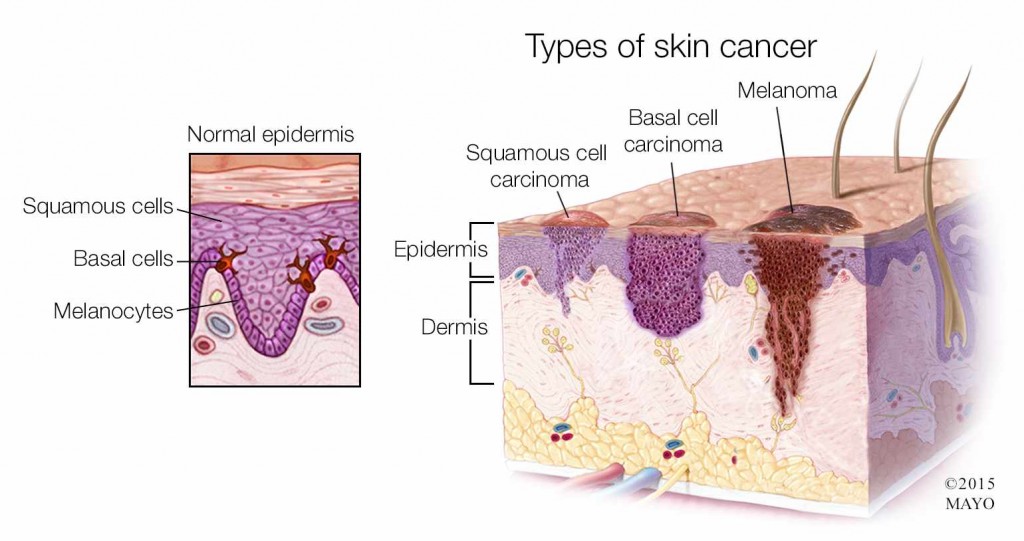-
Cancer
What you need to know about skin cancer

Cancers of the skin are the most common of all cancers but not all skin cancers are the same. The three common types of skin cancer are squamous cell carcinoma, basal cell carcinoma and melanoma.
Squamous cell carcinoma most often occurs on sun-exposed skin, such as the scalp, the backs of the hands, ears or lips. This type of cancer is usually not life-threatening, though it can be aggressive. Untreated, squamous cell carcinoma of the skin can grow large or spread to other parts of the body, causing serious complications.
Basal cell carcinoma begins in the basal cells — a type of cell within the skin that produces new skin cells as old ones die off. Most basal cell carcinomas are thought to be caused by long-term exposure to ultraviolet (UV) radiation from sunlight. Avoiding the sun and using sunscreen may help protect against basal cell carcinoma.
Melanoma is the least common of the three skin cancers but the most serious. This type of cancer can occur in many different areas of the body including areas that don't get much sun exposure such as the soles of your feet and palms of your hands. Melanoma can be treated successfully if it is detected early.
The first melanoma signs and symptoms often include:
- A change in an existing mole
- The development of a new pigmented or unusual-looking growth on your skin

Knowing the warning signs of skin cancer can help ensure that cancerous changes are detected and treated before the cancer has spread.
Factors that may increase your risk of melanoma include:
- Fair skin
Having less pigment (melanin) in your skin means you have less protection from damaging UV radiation. If you have blond or red hair, light-colored eyes and freckles, or sunburn easily, you're more likely to develop melanoma than someone with a darker complexion. But melanoma can develop in people with darker complexions. - A history of sunburn
One or more severe, blistering sunburns can increase your risk of melanoma. - Excessive UV light exposure
Exposure to UV radiation, which comes from the sun, and tanning lights and beds can increase the risk of skin cancer, including melanoma. - Living closer to the equator or at a higher elevation
People living closer to the earth's equator, where the sun's rays are more direct, experience higher amounts of UV radiation than those living in higher latitudes. In addition, if you live at a high elevation, you're exposed to more UV radiation. - Having many moles or unusual moles
Having more than 50 ordinary moles on your body indicates an increased risk of melanoma. Also, having an unusual type of mole increases the risk of melanoma. Known medically as "dysplastic nevi," these tend to be larger than normal moles, and have irregular borders and a mixture of colors. - A family history of melanoma
If a close relative, such as a parent, child or sibling, has had melanoma, you have a greater chance of developing melanoma, too. - Weakened immune system
People with weakened immune systems, such as those who've undergone organ transplants, have an increased risk of skin cancer.
Related posts:
- Mayo Clinic Minute: The A, B, C, D and Es of skin cancer
- Melanoma pictures to help identify skin cancer
- Melanoma care at Mayo Clinic







